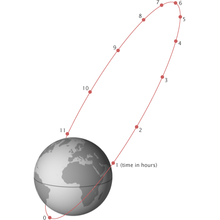 |
| The UrtheCast plan. Image c/o Focus. |
Two high definition cameras designed to stream detailed views of Earth from the International Space Station (ISS) blasted off into space today.
One still and one video camera, each designed and built by BC based UrtheCast launched at 3:52 p.m. ET from the Baikonur Cosmodrome in Kazahkstan, aboard an unmanned Russian Progress spacecraft poised atop a Soyuz rocket.
 |
| UrtheCast COO Wade Larson. |
According to the November 25th, 2013 CBC News article, "Space cameras from B.C. firm UrtheCast blast off," the camera's will then be attached to a platform on the underside of the space station. As outlined in the article:
The cameras will be able to view a large band of the Earth between the latitudes of 51 degrees north (which passes through Calgary) and 51 degrees south, a little bit north of the southern tip of Chile and Argentina.
As outlined in the June 10th, 2013 blog post "UrtheCast Proceeds with Takeover and Funding for ISS Camera's" the road to space for the scrappy start-up has been paved with creative funding and innovative business decisions. The company went public in June 2013 using a unique reverse takeover of Canadian mining company Longford Energy. As well, the cameras are being transported to the ISS by Roscosmos, the Russian space agency, in exchange for free access to expected Urthecast images.The video camera is pointable, and customers will be able to use it to look at a particular spot on Earth for a fee. The company expects customers to include governments, non-governmental organizations and corporations that would like particular types of live and archival images for purposes such as monitoring the environment.
UrtheCast CEO Scott Larson.
Once the cameras are aboard the ISS, the challenge becomes one of validating the business model.
Will customers pay to obtain UrtheCast images? That question will be answered over the next few months so stay tuned.





























